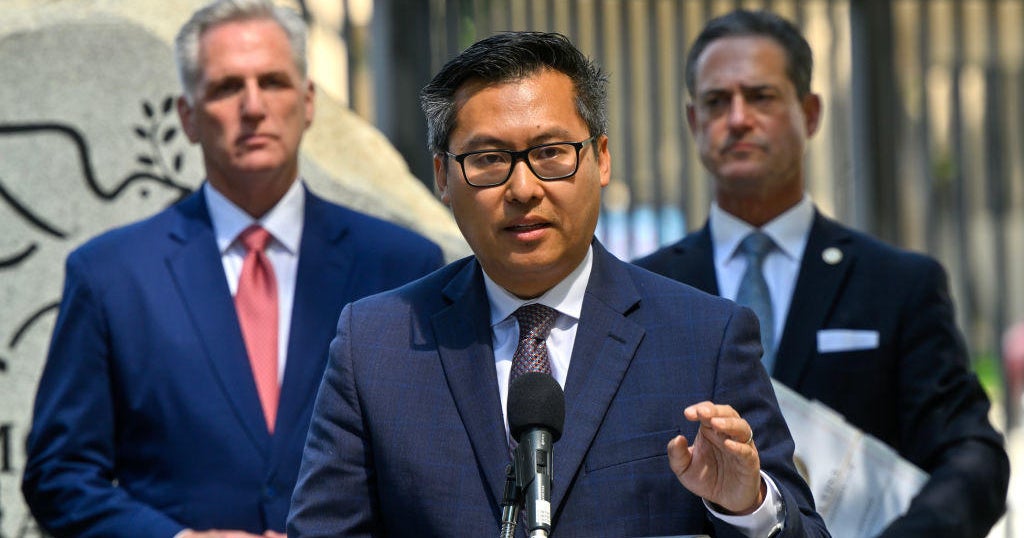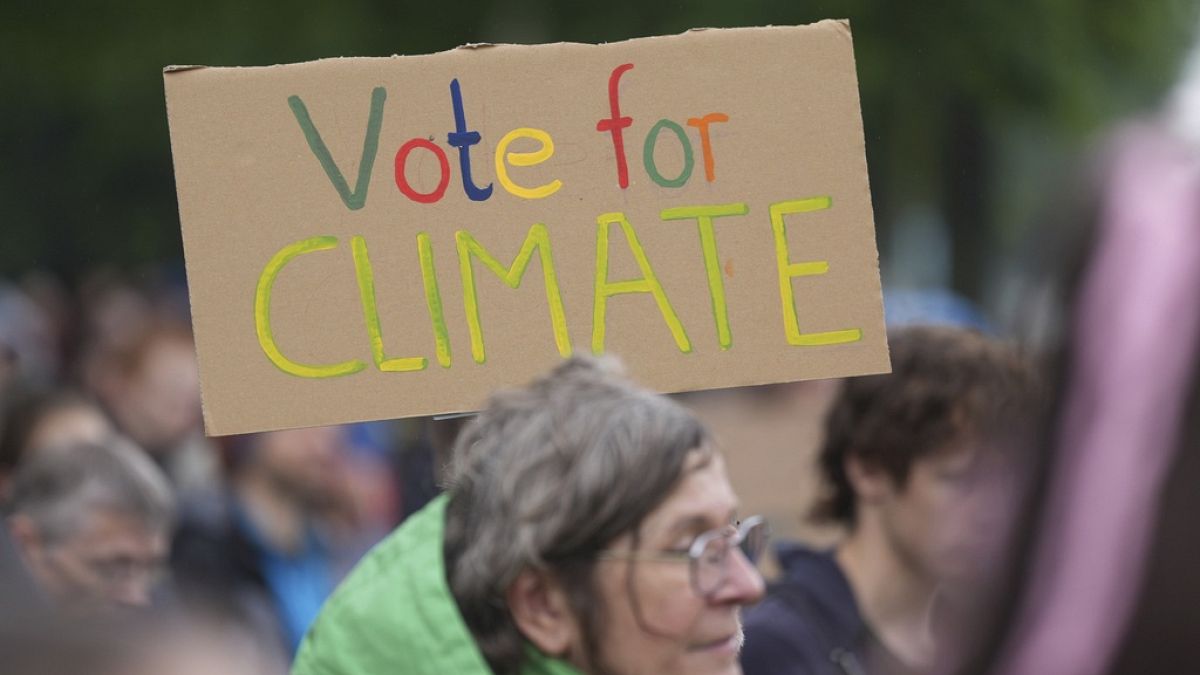California
Will 2024 become the Year of Mental Health in California?

Much is made continually of this state’s poverty rate, now running above 13%. But most polls show voters rank homelessness as even more of a problem, with about 70% in all recent public surveys naming that as California’s biggest problem.
Meanwhile, about 47% of homeless, say academic studies, suffer from some form of mental or emotional illness, from schizophrenia to post traumatic stress disorder and dementia.
That’s why the first ballot proposition on the March 5 primary ballot could have far more effect on the state than even the U.S. Senate race featuring prominent Democratic candidates Adam Schiff, Katie Porter and Barbara Lee, plus Republican Steve Garvey.
The upcoming Proposition 1 marks the first time state voters have been asked to earmark serious bond funding for mental health treatment. It would create more than 11,000 treatment beds and other housing for persons with serious mental and emotional problems, reinforce the treatment they can now get in some counties through the new CARE court system and possibly chip away some of the homelessness now so visible on streets and in parks all around California.
In the few counties already using it, the CARE court system is too new for its success to be evaluated. It allows those with severe mental illness to be held and treated, sometimes without their consent.
It’s true this creates limits on their freedom, but homelessness often associated with or caused by mental illness has created limits on other people’s freedoms: Freedom to use sidewalks without fear or self-consciousness, freedom to make use of public parks, freedom to park locked bicycles in front of homes, and much more.
Some numbers cited in the preambles to the $6.38 billion Prop. 1 provide evidence for all this: one out of every 20 adults in California now lives with serious mental illness; one in 13 California children of school age suffers serious emotional disturbance, one in 10 Californians has some sort of substance abuse disorder.
These numbers help explain the extent and growth of homelessness, as each of those problems is a known factor in driving many families and individuals away from their previous homes.
That makes Proposition 1 not merely a mental health proposition, but also a possible strong antidote to homelessness.
How urgent is the need for something like this? The $217 million the Golden Gate Bridge district has just spent on adding steel netting to prevent suicides by jumping from the iconic bridge might be one indicator.
Another is the fact that California now houses about 150,000 mentally ill persons in its prisons at a cost of about $100,000 per person per year. This cost by itself tops what Prop. 1 would provide. So cutting the number of affected prisoners by even one-third would by itself make the ballot measure a superb investment.
It if improves mental health care in prisons, it would also save California the $50 million per year in fines it now faces for failing to follow a court order to fill mental health staffing vacancies.
The correctional system explains its slow hiring by reminding critics that many prisons are in rural locations where recruiting highly-educated employees has always been more difficult than in large metropolitan areas.
Perhaps the bond proposition’s biggest backer will be Gov. Gavin Newsom, who pushed hard both for CARE courts and to put Prop. 1 on the ballot. No governor since Ronald Reagan in the 1960s has taken greater interest in mental illness, and Newsom’s activity is almost directly opposite to Reagan’s.
It was Reagan who signed the Lanterman-Petris-Short Act of 1967, which closed many mental health facilities. Reagan promised to replace them with a system of treatment-based community-sited halfway houses, but that never materialized and California’s mental health problems and associated factors like high prison populations and homelessness have steadily increased ever since.
The sheer volume of homeless in California — about 180,000 persons now sleep in public places every night across the state — has mandated a change in priorities.
Newsom and the Legislature are responding with a path that might help. It’s an open question whether cash-strapped voters will follow.
Email Thomas Elias at tdelias@aol.com.

California
Mail Carriers Bitten by Dogs in California More Than Anywhere Else in U.S.


Letter carrier T.J. Jackson shows how mail carriers can use their satchel to protect themselves from aggressive dogs. | Credit: USPS
Though California has earned the unsavory celebrity of having the greatest number of dogs biting mail carriers in the United States for the sixth year in a row, Santa Barbara County stands apart. Only four mail persons were bitten, compared to 65 in Los Angeles and 727 statewide, in 2023.
Nonetheless, dog bites hurt. The Postal Service releases the dog-bite statistic annually to remind dog owners to keep their dogs indoors or on a leash when letter carriers make their rounds. Last year, more than 5,800 postal persons suffered from aggressive dogs. Their injuries can be costly to dog owners, as much as $64,000 per insurance claim, according to the USPS, and sometimes result in mail being held at the local post office.
Santa Barbara County’s dogs bit about the same number of postal carriers last year, and the number remains small compared to Los Angeles or California. USPS spokesperson Mieko Patton attributed the low number of dog bites to dog owner actions: “Santa Barbara County residents do a really good job of keeping their dogs restrained while letter carriers deliver the mail.”
California
Putting teeth in California housing goals

You don’t necessarily always like to see various aspects of government in California seeking financial penalties against other aspects of government in California.
It’s unseemly, in that we’re not talking Monopoly money here. It’s not “theirs” — not government’s — it’s our money, that we gave them. It merely encourages highly paid government lawyers to go out and hire even more highly paid private attorneys to advise them in their fight to keep their version of our money.
But sometimes, absent being able to throw a government in jail when it is flaunting rules or even laws that matter to all Californians, financial penalties or at least the threat of them are appropriate bargaining chips.
Housing is the No. 1 priority for Californians right now. The lack of supply and the high price for what there is affects almost every aspect of life in our state. It is the true root of the homelessness crisis that plagues us; it affects our economy in not letting people live near where they work; it affects our society in not allowing younger generations into the real-estate market, prompting them to look elsewhere to live.
So the fines that are a part of Senate Bill 1037, authored by Sen. Scott Wiener, the Legislature’s toughest attack dog in the fight for more housing, are appropriate.
Wiener’s office says the bill would strengthen the state attorney general’s “ability to enforce state housing law with fines against cities that commit egregious violations of the law. This heightened enforcement will create stronger incentives for cities to comply with state housing laws. SB 1037 passed 23-9 and heads next to the Assembly, where it must pass by Aug. 31.”
Wiener says the bill applies only to cities “that have acted arbitrarily, not to cities that make good-faith errors.” And it’s not like the money gets purloined for the state’s General Fund: “The fines generated by the bill’s civil penalties will be deposited into an affordable housing fund for use in the offending city.”
The problem today is that if a judge decides a California city is in violation of state housing law, while fines can still be imposed, they can wait up to a year to comply.
“Local governments thus have no real incentive to follow the law since they can force the state to sue, lose, and then simply remedy the violation at that point and avoid penalties. This is a huge waste of taxpayer resources and undermines California’s housing goals,” Wiener says.
Even local politicians who acknowledge the obvious fact that California is underhoused often support only solutions that aren’t in their backyard. They know that creativity is needed, from more ADUs in formerly single-family neighborhoods to affordable housing in formerly commercial zones to reforming CEQA to streamlining ancient zoning codes.
But they too often want the reforms to occur in the next city over, insisting that the status quo is serving their city well.
The housing elements that every city and county in the state must update all go toward doing their part to meet their share of the 2022 California housing plan, which correctly says the state needs to plan for about 2.5 million new homes in the near future in order to put an affordable roof over the heads of all of its residents.
SB 1037 would allow the state to apply a minimum civil penalty of $10,000 per month, possibly going to $50,000 per month, for each violation by stick-in-the-mud cities. Nice to see that any such fines would go back into housing in the recalcitrant pols’ own communities.
The Assembly should join the Senate in passing the bill, and the governor should sign it.
California
81-year-old ‘serial slingshot shooter’ found dead days after he’s arrested for terrorizing neighborhood for a decade

An elderly California man accused of terrorizing his neighbors with a slingshot for nearly a decade died Wednesday just days after he was arrested and appeared in court.
Prince Raymond King, 81, was found dead inside a home in Azusa, Calif. around 7:30 a.m., police told the Los Angeles Daily News.
The owner of the home King was found in is still unknown, but Azusa police Sgt. Nick Covarrubias told the outlet there was no “evidence of foul play.”
King died of arteriosclerotic cardiovascular disease — which damages the arteries that carry oxygen away from the heart — and it was ruled to be natural, according to the local medical examiner’s office.
The grey-haired menace slowly walked into West Covina Superior Court for his arraignment on Tuesday, where he had pleaded not guilty.
King, who wears glasses, was accused of using his slingshot to careen metal ball bearings at his neighbors’ homes and vehicles for the past nine years, according to ABC 7.
He was charged with five counts of felony vandalism and two counts of misdemeanor vandalism for allegedly targeting his neighbors’ property with the slingshot — breaking numerous house windows and car windshields with the small hand-powered projectile weapon.
The Los Angeles County District Attorney’s Office charged King with vandalism from incidents from October 2021 to May 2024, according to the Los Angeles Daily News.
However, neighbors alleged King’s slingshot attacks have occurred since 2015.
Police determined the ball bearings were coming from him amid their investigation and arrested the reckless neighbor on May 23.
During his arrest, police found the slingshot and 10 to 40 ball bearings in his possession, Cpl. Benjamin Cypher told the outlet.
The slingshot vandal was released from custody following his hearing Tuesday when his attorneys argued he suffered from a number of medical illnesses.
However, he was ordered not to stay in his Azusa home — about 25 miles outside Downtown Los Angeles — though he was allowed to return to pick up medications.
King was also told to stay at least 200 yards away from the homes he allegedly targeted, not to have contact with any of the victims, and was ordered not to possess any deadly weapons, including his signature slingshot.
“We’ve been here since 2018. (It’s been) ongoing all that time,” one of the King’s neighbors and alleged victims, James Mead, told LA Daily News following King’s arrest.
“To me, it seems to be a really good neighborhood, except for windows being broken,” Mead said.
He was due back in court on June 17 for his preliminary hearing.
-

 Politics1 week ago
Politics1 week agoMichael Cohen swore he had nothing derogatory on Trump, his ex-lawyer says – another lie – as testimony ends
-

 News1 week ago
News1 week agoVince Fong wins special election to finish term of former House Speaker Kevin McCarthy
-

 News1 week ago
News1 week agoVideo: Midwest Storms Destroy Homes
-

 World1 week ago
World1 week ago€440k frozen in Italy over suspect scam by fake farmers
-

 News1 week ago
News1 week agoBuy-now, pay-later returns and disputes are about to get federal oversight
-

 News1 week ago
News1 week agoRead the I.C.J. Ruling on Israel’s Rafah Offensive
-

 News1 week ago
News1 week agoVideo: Protesters Take Over U.C.L.A. Building
-

 World1 week ago
World1 week agoOmbudsman probes Commission's senior staff 'revolving door'




















